Before we start, let me set a few things straight.
1—This article is not saying you SHOULD make or make or buy NFTs or that you SHOULD NOT. It is an issue facing the art world today, and it’s a very confusing topic, so I want folks to understand it and not be scared of it. My goal is to give a little overview from my non-expert understanding and to point those folks who want to learn more towards resources that have helped me get a grasp on this. [EDIT: Let me add here, bc folks are getting it wrong in the comments, the fact that I am writing this article does not mean I or Muddy Colors are advocating for NFTs. I am stating this again, clearer. I want folks to be informed about these things so they can make an educated decision. This article is not to tell you what that decision should be.]
2—Not an expert, so don’t come for me over the details. This is just a simplified overview.
3—This is obviously slanted towards what artists in the fantasy community would be interested in knowing, because, well, we are on Muddy Colors.
4—Whether you are pro-NFT or anti-NFT you can be civil about it. We’ll go into the why’s deeper below, but this is a topic of high feelings and much debate that I’ve seen get downright nasty on social media, to the point that a lot of folks are scared to even type NFT on twitter. So whatever you believe, be nice in the comments. Share opinions, share further resources you like, but Wheaton’s Law applies, ok?
And now, welcome to…
AN INTRO TO NFTs that is as simple as possible from a non-expert meant to clear up some misconceptions and point anyone interested towards more in-depth resources
What is the BLOCKCHAIN, What is Crypto and What is an NFT?
A BLOCKCHAIN is simply a unchangeable chronological record kept by a computer network. Once a piece of data is entered on the blockchain it cannot be changed, but it can be added to and tracked. It is a tool for tracking assets. It is a secure method of tracking business transactions without needing a third party institution like a bank or a government to regulate it. The data is accessible by anyone with the right technology. A “ledger” is the list of transactions tracked on the blockchain.
CRYPTO is short for Cryptocurrency, which is a currency that is not officially regulated by a government and is created (or “mined”) by computer transactions and protected by cryptography. There are many cryptocurrencies, with varying amounts of energy used to created them. Bitcoin is the most well-known, followed by Etherium. There are hundreds, if not thousands, of different cryptocurrencies, and it is important at this point to remind everyone that all currencies (even the big official governmental ones) work because a group of people decide to believe they are worth something. There is no hoard of gold at Fort Knox backing up every American dollar in circulation.
An NFT stands for a Non-Fungible Token. Fungible means interchangeable. Non-fungible is just a fancy word for unique. An NFT is a unique digital token. This can point to a physical object, but there must be a digital component. Most often, this is a piece of unique digital art.
Crypto and NFTs exist because the Blockchain is an unchangeable record of all the transactions around the creation of Crypto and NFTs. It tracks when they are “mined” (crypto) and “minted” (NFTs), who made it, who buys it, and who owns it throughout its life.
What is Positive about these technologies for Artists?
The concept of the Blockchain as we know it has been around since 2008. Many years ago I heard the more tech savvy artists I know talking about the incredible potential of a blockchain to track copyrights both indisputably and automatically. This capability would mean two major things for artists—they could track and defend the copyright of their work much more easily, and they could get a cut of secondary sales automatically, a huge deal to artists who sell to galleries and collectors.
NFTs are ideally a great thing for digital artists — they would finally be able to edition digital art in a way that only artists in the physical mediums could do before, because a digital piece of art could finally be considered and tracked as an original unique piece of art.
Just to be clear, neither of these things are happening in a truly functional way yet. There is a great potential there, like any new technology. It is going to take time for the hype to fade and see what shakes out.
What is Negative about these technologies for Artists?
Well, like any new technology, the scammers are swamping the platforms before most artists even understand the technology. In my opinion this is no different than the wave of scammers that rode in when one-off digital printing became popular. Go look on Redbubble and Society6 — they are full of ripped off art being sold without the artist’s permission or knowledge. This is no different. The big NFT platforms like OpenSea are as lax in policing copyright as Redbubble and Society 6 are. Same old story, sadly. These platforms make money when folks use them, and they make the same amount of money whether that user is legit or not. It costs money and gives no reward to check copyright and defend artist rights, so they’re not motivated to do so.
It is critical to remember that just because someone may make an NFT of your art and sell it, that is not a legal claim and it does not mean they have any rights to your work and it does not mean you could not make a legitimate NFT of the same piece of art and sell it properly if that’s what you wanted to do. This is new technology and many artists I have talked to have been scared that they are getting blocked out of rights to their own work. Trust me, a thousand IP lawyers have been working very hard to build up caseloads protecting Mickey Mouse since the first NFT was minted. Ignore the medium for a second and think about it as if someone was selling a print of your work at a convention. Are they wrong? Yes. Are they stealing from you? Absolutely. Are they going to make a ton of money doing it? Probably not. They don’t have your original files, they don’t have certificates of authenticity. They’re making a copy of a copy of a copy. It’s not good quality. They cannot pose as a truly legit business. They will only be skimming a little low level business at the bottom. It sucks, but it’s nothing new to artists, unfortunately.
What about this stuff I hear about it being bad for the environment?
The original cryptocurrencies take a lot of computing power to create. There are giant server farms dedicated to nothing but mining cryptocurrency 24/7. This uses a lot of electricity, and that’s not great for the environment. However, there are many different cryptocurrency platforms right now, and many NFTs are paid for by cryptocurrencies that either are use less energy or offset their energy usage by using green sources or doing environmental work as part of their creation. I am not going to drill down into a comparison of cryptocurrencies right now. There are alternatives available that do mitigate the environmental impact, and as an artist and/or collector you can choose to use these platforms instead.
Why do people fight about NFTs so much?
Well, let’s remember what we said above — a currency only works if enough people believe in it. So the folks that got into cryptocurrency early need more people to believe in cryptocurrency. It’s not that different than the stock market — a stock is worth more money the more people want it. And if everyone decided tomorrow to pull their money out and cash in their cryptocurrency then the worth of that currency would plummet. This happens in crypto all the time. And this is exactly what happened in the stock market crash in 1929. People got scared and wanted to sell their stocks, which led to those stocks losing money and more folks wanting to sell. This led to folks rushing to banks to pull their cash out — but banks don’t just keep everyone’s money in a vault, they use it on investments — that’s how banks make money. If everyone showed up at once the bank would run out of money AND THEY DID. So now in the US and many countries, there are government agencies that guarantee funds in the bank up to a certain amount, which keeps folks from panicking and pulling all their money out at once.
Crypto is unregulated, which means it isn’t guaranteed by anyone. So if you have a ton of worth in crypto you don’t want to pull it out and cash it in, you want to leave it in the system and convince people that the system is sound so more people add money to the system and it gets stronger and your original investment is worth more money. This is how all financial systems work — there’s just no safeties on this system. If you get scammed out of your crypto, no internet police are going to go get your money back. Crashes in cryptocurrency happen often, and people lose a lot of money. Does that mean you shouldn’t get into it? That’s your call, but if you do it does mean you should be careful and do your research.
Also, this stuff is CONFUSING. I am barely skimming the surface here. Money make a lot of folks squeamish, artists especially. (Trust me, I’m the one negotiating with artists all day.) People don’t understand the system so they don’t want to pay attention to it, and when they’re bombarded by the folks pushing it so hard (see above paragraph) they don’t want to figure it out. So you have the true believer die hards on one side and the finance-avoidant folks on the other and that’s a recipe for fights if I’ve ever seen it. Add in some intense feelings about ownership of your artwork on one side and jealousy of artists on the other and it’s exactly the vicious mess we see on social media every time someone mentions NFTs.
Why are all the most popular NFTs…bad art?
Look, all art is art, so I don’t want to be a jerk to anyone’s creative output. However it is true that the “record breaking” NFTs are not about the art at all, they’re about the hype. Sure the gallery world has gotten into selling NFTs, but a better model for how the NFT industry actually works is…sneakers. I’m not personally into sneaker culture, but it’s very little about aesthetics and almost entirely about exclusivity, celebrity, and hype. The best predictor of how well your NFT will sell is not how beautiful your art is, but how many followers on instagram you have. This will probably change over time, and a lot of serious collectors and galleries are experimenting with platforms that have a physical piece of art attached to an NFT version, but for now, it’s mostly about cool kids buying stuff from other cool kids. The quality of the art attached is mostly irrelevant. Although there are folks in the Fantasy Art Community who are selling NFTs, I haven’t seen any making a significant amount of money from it.
How does this affect me as an artist?
Well, it depends on how you feel about new technology. Are you an early adopter? Do you have an interest in investments and understanding financial systems and have a good handle on e-commerce? Do you make digital art and are intrigued by a way to sell unique originals? Then by all means, make some NFTs. Experiment. Treat it like a game and play with the system. Buy some things first, get a feeling for how it all works. Mint some NFTs. Do a lot of research. Expect to get scammed at least once. I am not about to stand in the way of artists giving folks with money to burn something to spend it on. And there are a LOT of folks in tech with a lot of money in crypto that can’t spend it on a lot of things. That’s why you’re seeing these very high prices for NFTs. Remember, if you want to keep your crypto worth high, you don’t want to take your money out of crypto. (There’s also problems associated with exchanging crypto for dollars, but let’s not go there right now.) And how many things can you buy with crypto? Not a lot. The only thing you can buy is other crypto…or NFTs. I have talked to some artists, especially in the Bay Area, who talk about how many tech bros are walking around crypto rich with nothing to spend it on. That’s why you’re seeing restaurants spring up that only run on cryptocurrency, and NFTs of pizzas. People have money to burn and very little to burn it on. And a lot of folks are happy to give those folks things to spend that crypto on. But unless you already have a following of folks in that area then you’re not going to gain it just by making an NFT.
If that paragraph above sounds like a nightmare scenario and the last thing you want to do is do research on these things, then…don’t! I do believe that advancements in copyright tracking and secondary sales are going to come out of this technology, but that’s going to happen whether you individually participate or not. Remember, the system is as strong as people believe it is, so people who have bought in are going to try to give you FOMO. Ignore it. Go make your art, sell originals and/or prints, take commissions, do your career the way you want to. You don’t need to make NFTs of your work if you don’t want to. You don’t even have to chase scammers trying to rip off your work if you don’t want to. The system works by making you feel like you’re missing out on something. Let me put your anxiety at ease. Go back to doing what you care about and ignore this whole topic for a few years. See what good lessons come out of it on the longer timeline.
How does this affect me as a collector?
Same as above. If everything you’ve read above intrigues you, then dive in, do a bunch of research, and start buying NFTs. RESEARCH EVERYONE BEFORE YOU GIVE THEM ANY MONEY. There are trusted communities to join, platforms that do due diligence and make sure the original artist is involved in everything. It’s really not that different from the gallery world, just a ton more spam. Treat it like a game, and have some fun. Pretend it’s like beanie babies in the 90s. Some folks made a lot of money, but at some point the money moved onto something else (Tickle Me Elmo, as I recall) and the folks left holding the Beanie Babies lost out. Unless they really enjoyed their collection for the joy of it. And if digital art brings you joy, then go for it. Just know you are gambling in an environment even less safe than the stock market.
What about the community aspect?
Since currency is, again, only worth something if a group of people agree that it is, then communities of people spring up around crypto and NFTs that all agree to believe in it and trade together. There’s a lot of groups that exist to check scams and verify good deals. There’s groups of artists who work together to mint NFTs as a group (there are registration costs to get anything put into the Blockchain) just like there are artists who band together to form gallery groups. Every NFT platform has a discord server. A lot of groups now are using new crypto currencies they create to organize group memberships and the currency is not worth money, it’s worth votes in the group. Some of these are what’s called a DAO (Decentralized Autonomous Organization).
There’s a reason all they NFT stuff has come to prominence over the pandemic — we’re all stuck in the house with too much time, too much anxiety, and too little social interaction. Perfect grounds for these communities to grow.
Articles, Resources, Further Reading…
NFTs were supposed to protect artists (The Atlantic)
Most Artists are Not Making Money off NFTs
This 24yr old artist made over $300k in 10 months selling NFTs
The internet turned money into a hobby
Do blockchains and NFTs really protect virtual property?
How NFTs are fueling the modern art world
After the Beanie Baby Bubble Burst
[EDIT: I am adding this video in as well, because a number of folks in the comments are bringing it up. I do not think it fits with the 101 basic info nature of the article’s aim, and it is very much a takedown, but I think it is very well researched (and very long) so I am going to add it here for deeper context, so consider it a 201 level]




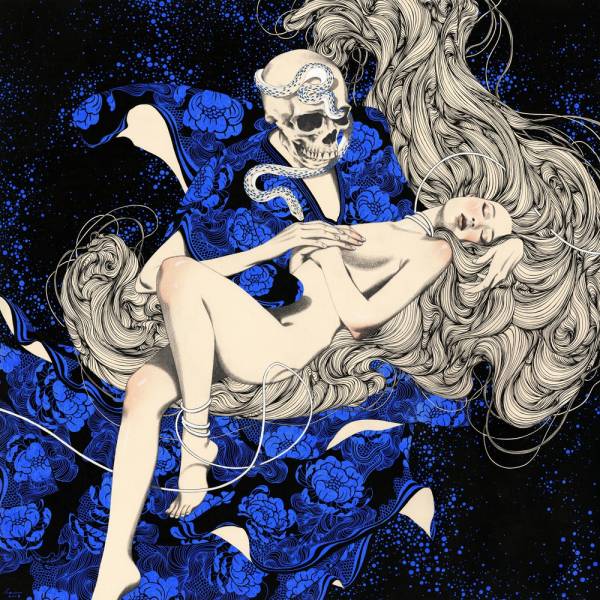
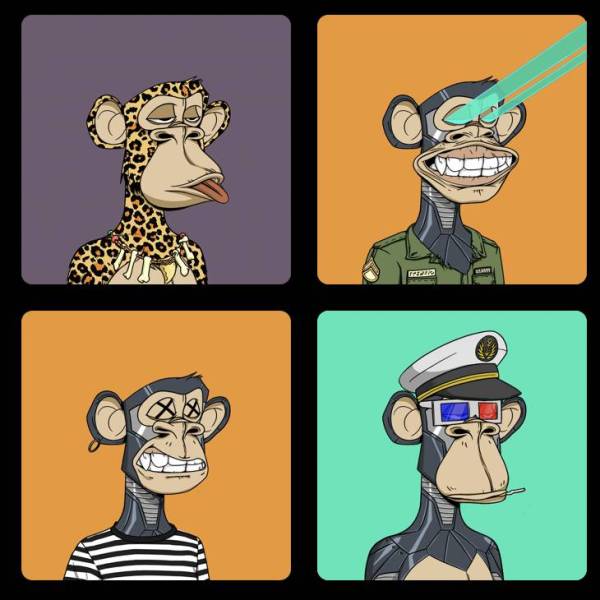
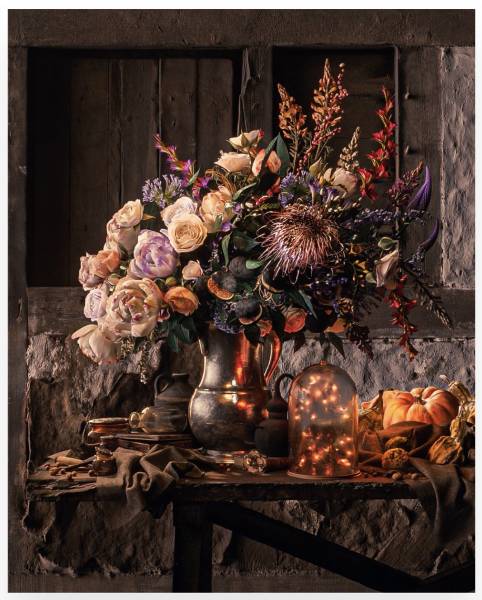
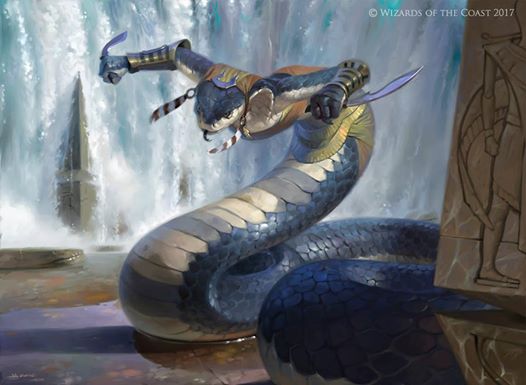
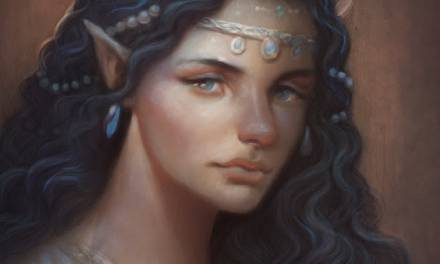

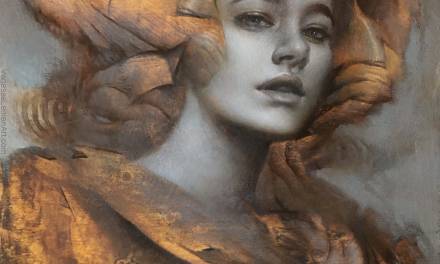
Im sorry this is not a neutral overview, it get stuck with the discussion as it was 8 months ago, sorry but the discussion evolved so much and so many question came out. we all know this silly stuff doesnt eat the energy output of south africa anymore (altrough it still very bad for the enviroment beyond some platforms still promising better)
and that hanwaiving at how the entire NFT community is riffe with scamming is so dishonest, this is not a platform allowing some assholes to sell prints they didnt make, the entire economy works trough whats basically a “bigger fool” scam.
also this article coming up at the same time as crypto having one of their worst price falls is either imposibly funny or really devious.
and absolute embarasment for an otherwise lustrous website.
I agree with Caterina.
If you’re going to include pivotal information about NFT’s “Line Goes Up The Problem With NFTs” should at least be mentioned:
https://youtu.be/YQ_xWvX1n9g
This is an article for folks who don’t understand what the topic is and it is not meant to be complete or cutting edge, as stated in the opening intro. I am addressing questions I hear constantly from artists on the topic. If you are an expert then this article is not for you, but if you are an expert and you disagree, I would love to see a constructive comment or links to further info.
It’s important to me to make this article as neutral as possible and provide information, not give advice for whether I myself think it’s worth getting into NFTs or Crypto. That would be a very different article.
Currently, the best explanation for why NFTs (and crypto in general) are a lose-lose after for everyone is The Line Goes Up by Dan Olsen. https://youtu.be/YQ_xWvX1n9g
In the video’s description you can find a bunch more resources and articles detailing the failings of crypto and NFTs.
That is a great, well researched video that I think anyone interested in this topic should watch. I do think it’s way beyond the 101 level and it’s also very much a takedown. Even if it’s an opinion I agree with. I’ll add it to the end since multiple folks are bringing it up.
I think you did a decent job of discussing what you said you were going to discuss, Lauren. Per Wheaton’s Law, that’s all I’m going to say.
Appreciated! Like I said, if this was an article about what I personally thought about the topic it would be very different. But I think it’s important to have a basic 101 article on here, bc there’s so much confusing and conflicting info everywhere.
I have wondered and you have helped. Thank you
Great! That’s the point.
NFT = WTF? 😉
Im glad someone gets the humor.
I guess I’m going to spend a bunch of time breaking down the points you made in this article. It’s not how I’d prefer to spend my time, but in “barely scratching the surface” in this article you really painted NFTs in a much brighter light than (I hope) you meant to.
First off: what is an NFT? An NFT, simply, is a receipt. Generally that receipt comes in the form of a link pointing to an image hosted on a server, but it can be anything including malware designed to steal everything in your crypto wallet. You pay an amount of crypto to put it on the blockchain (mint it) and an amount of crypto to then put it up for auction. Then buyers also have to put up an amount of crypto to bid on them. I’m being vague about the amount because it fluctuates an absurd amount and can be difficult to quantify. NFTs were created by people with crypto so they could have something to spend crypto on.
“You can track copyright on the blockchain.” Yes, technically. If you’re willing to pay someone to mint that information for you, you can absolutely use the blockchain to track copyright. But only in that specific blockchain. And it in no way prevents anyone else from minting information claiming your copyright on a different blockchain without your knowledge it consent. Blockchains don’t interact with one another, so information minted on one is no more or less valid than information minted on another. By design blockchains are decentralized, so any information put on any blockchain isn’t vetted. Anyone with the enough resources can put any information they want on the blockchain.
You can make money from every sale. Again, technically yes. BUT! Only if the platform you’re selling on allows for it, and most don’t. And, again, anyone can make an NFT pointing at your original NFT, and you won’t see a cent from those sales.
Crypto is demonstrably bad for the environment. Full stop. Most crypto currencies that say otherwise are simply too small and unpopular to make much of a dent. A coin is minted when a specific, unique equation is solved; the more coins that are minted, the more complex the problem to be solved. The more complex the problem, the more computing power and energy is needed. So in effect, the value of a crypto currency is directly proportional to the amount of energy it takes to mint a coin. And there’s no way to buy enough carbon offsets to out weigh or even out the exponential energy use of any of the most popular crypto currencies.
Why do popular NFTs look like garbage? Simple. The people interested in buying them aren’t interested in the art, they’re looking for a return on investment.
Why is there nothing to buy with crypto? Crypto currencies are extremely volatile transactions take time to happen. Because if that you can easily lose on a transaction, even if you’re the seller.
Crypto is unregulated. Even if you can ignore the rampant scams, NFTs and crypto are great for laundering money. Speaking of scams, an acceptable and common method of boosting the price of NFTs is buying one you made multiple times with different crypto wallets you control. It’s an easy way to create artificial interest in your NFT. And in any other market it’d be fraud, but because crypto is unregulated and anonymous it’s common practice.
I could very easily go further, but I need the do something more productive with my time.
You’re not breaking down my points you’re giving more info to support them, and I don’t disagree with any of it. My intent is not to write a “NFTs are Bad” article, my intent is to write a “This is what an NFT is” article and in doing that, make it as simple to understand for folks who don’t know anything about it. To that end much needs to be simplified and yes, some things are glossed over. That’s what the resources linked to are for.
I think if you read this article and look at the resources listed it’s impossible to think I am encouraging anyone to get into NFTs, but that’s not the point. I hear from a lot of confused artists and a lot of folks worried that they are missing out on something important to their careers, and I want to put those fears to rest. If folks still want to get involved in NFTs then I just want them to do it carefully.
Then I have to ask. what is the point of this article? is not in deep at all, it barely scratch the surface of all this discussions. its only points are adressing discussions from last year that evolved way past all you are talking about. what is the point of trying to sell NFTs “to anyone interested in doing them” as if they are the brand new thing? if anything it does a good job at obscuring and muddying the current discussion around nfts by pretending we are still in july 2021. muddy colors indeed
Just because the information is basic, and a little later than most, doesn’t mean it shouldn’t be written. Muddy Colors is a library above all else.
If YOU know a ton about NFTs, awesome! This article probably wasn’t meant for you.
Thanks for tackling this topic Lauren. Doesn’t seem to be any love for NFTs in the comments here and I don’t aim to defend them but the strength of folks’ opinions does surprise me a bit. I was intrigued with the technology for a while but came to the conclusion that the culture around it was the problem and because, as folks have said, there aren’t any other real uses for this tech out there yet, that problem had its fangs too deep for me to want to explore any further.
TL:DR – blockchain has rad potential, but good god these discords…
That’s the way of new technology. In the short term it’s a hot mess, and then smart more thoughtful folks figure out how to apply new tech and new knowledge in more sane ways. A lot of folks aren’t old enough to remember that there was much the same pattern when the first wave of internet business came up in the 90s. There was a rush, there was a crash, and then we figured out how to adapt the web to our lives. The same thing with social media. Now it’s this technology.
https://www.youtube.com/watch?v=8St36RjHd2E
https://davidgolumbia.medium.com/cryptocurrency-is-garbage-so-is-blockchain-3e80078e77fe
https://davidgolumbia.medium.com/everything-about-the-cryptocurrency-grift-faed1308ace7
I for one don’t make digital art, don’t love the idea of NFTs, am pretty financially risk adverse AND loved reading this article to give me basic definitions and easy to understand information surrounding a topic that comes up in life and on social platforms whether I seek it out or not. I think it helps break it down just enough to where I now have a good idea of what aspect of this technology I’d be interested in following (copyright issues for me!). Thanks Lauren !
Thanks Lauren for a killer article, which to me felt like a good 10,000 foot view, leaving room to investigate a particular aspect more closely. Sorry if you’re getting flack for it – I always appreciate your willingness to start these discussions!
Thank you very much for this article. As someone who is struggling to get a solid foothold in the fantasy artist community, both in skill level and just recognition of being alive, the development of NFT’s added a fresh layer of anxiety to throw into the mixture, making me feel like I’m yet another step behind everything that’s happening. Much like a previous article of yours on social media, I’m paraphrasing but I believe you referred to it as a tool that should be leveraged in a way that you feel comfortable with. This article gave me more clarity on the nature of NFT’s, and that they they are non-essential. Much like a foundational artist skill set, I’ve come to see benefit of a foundational art business, in terms of, a solid body of work, selling originals, prints and taking commissions. Many thanks.
Many parts of this post do more harm than good. For example, saying that “people don’t understand the system so they don’t want to pay attention to it, and when they’re bombarded by the folks pushing it so hard … they don’t want to figure it out” and attributing negative responses to NFTs to squeamishness or jealousy is either naive or just gross. It’s not enough to claim ignorance here; you’re adding fuel to the “have fun staying poor” rhetoric that crypto- and NFT-hodlers use.
In fact, many of us DO understand the systems.
Some of us work in computer science or adjacent fields and have put in overtime researching this topic. If you’d search a bit you’ll see that many computer scientists are speaking out against the technology as a whole. That blockchains themselves DO NOT WORK. They do not and cannot, due to how they are built at the very foundations, deliver on the promises they make. It’s a damn house of cards. And there are actors who would obfuscate all of this with a lot of jargon to make anybody think they can float out to sea with a boulder tied to their ankle.
So much about this is damaging, not just to individuals who can get scammed, have their work stolen, and lose money they barely have enough of, but the art community as a whole, the environment (someone else already said it: carbon offsets are barely helpful when we’re already in an environmental emergency, and we simply do not have sufficient or trustworthy data for many of the less popular blockchains), and more.
So no I don’t think it’s fair that you, who have become an authoritative voice in this industry, choose to excuse yourself with “this is just the basics” and “I’m not an expert” while painting those against it in a negative light. If you don’t know enough about it, maybe don’t be the loud voice in the room and instead just hand the mic to those who do. Instead and firstly, not at the end.
Unfortunately it’s kind of a rule of thumb online to ignore the comments. But in this case the comments are better than the article, especially Briar’s.
On one hand, it’s good to encourage artists to try new formats/venues to make money, on the other crypto as a whole is bad for the environment while also servicing a miniscule fraction of the population; there are many different platforms for nfts, but you’d have a better chance to sell on the most popular ones, and they’re far from being green. Every other day there’s a new alarm bell being rung to remind us that we’re literally facing extinction if we aren’t successful in reducing emissions and pollution, so when we talk about possibly engaging in one highly environmentally damaging practice, the only acceptable thing to do is to denounce it. We don’t need crypto or nfts to survive.
(I’m aware the author is not endorsing nfts but I will say this for anybody who’s considering it).
I came back to this hoping for some sort of retraction or admission from Lauren that NFTs demonstrably don’t have any redeeming features, but it doesn’t look like that’s going to happen.
I still find it really strange that she published this mealy-mouthed article only a couple of weeks after the bottom fell out of the NFT market. Especially since she was using a lot of rhetoric that NFT bros loved.
I’m sure in a few weeks she’ll be coming out with an article about why AI is actually a great thing for artists and how it’s just misunderstood. You can always rely on her for some shit takes.
i was deceived by an online scammer and i lost all my funds on my cash app but i was lucky to come across a recovery expert by the mail zattrecoverypro1 @ gmail com and i was able to recover all my lost funds all thanks to him and his team. if you have similar issues you can contact him and thank me later stay blessed
For any hack related jobs, crypto recovery or data and fund recovery reach out to (zattrecoverypro1 AT G mail c o m) they also help trace accounts that are hacked and track down scammers as well.